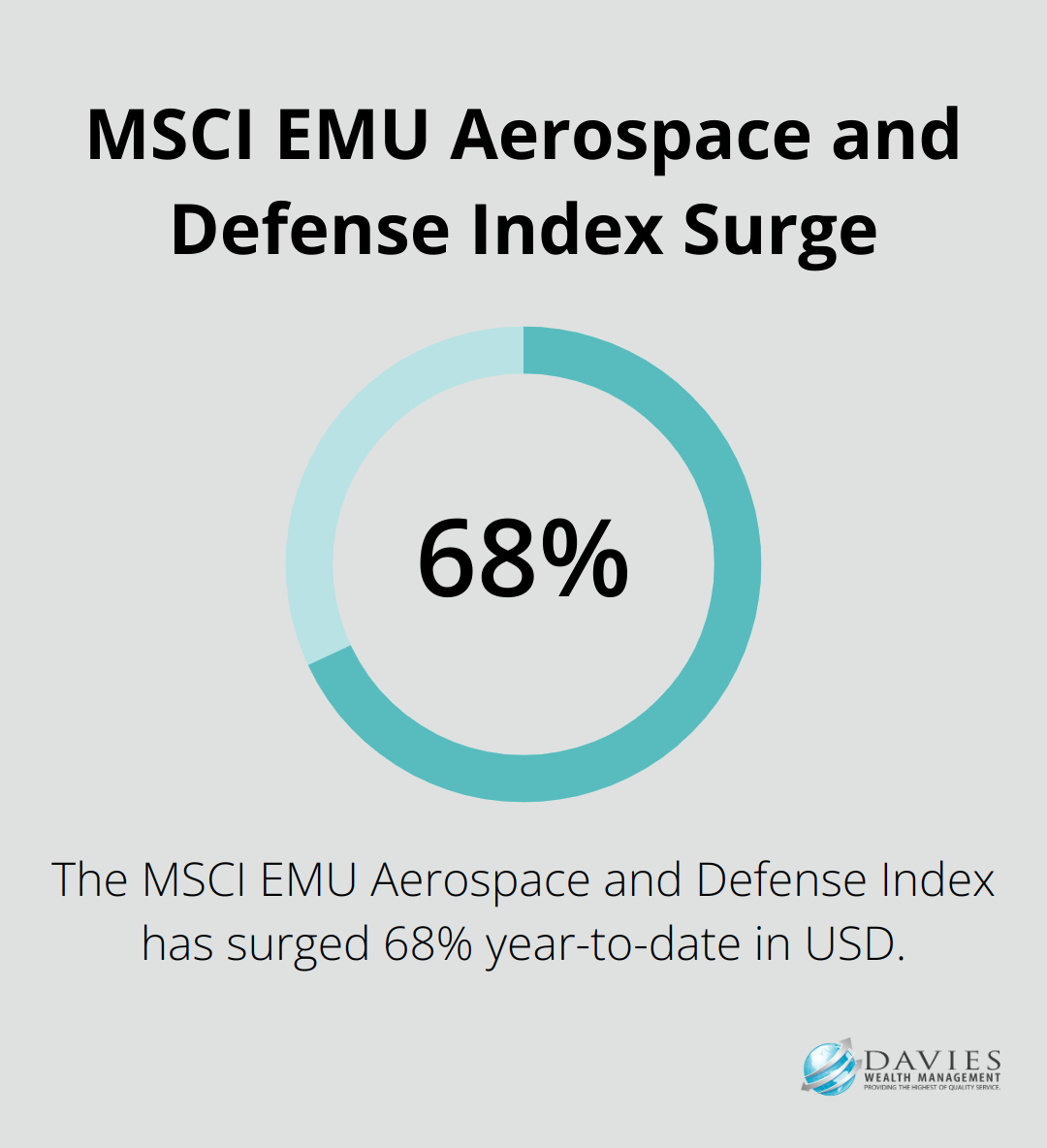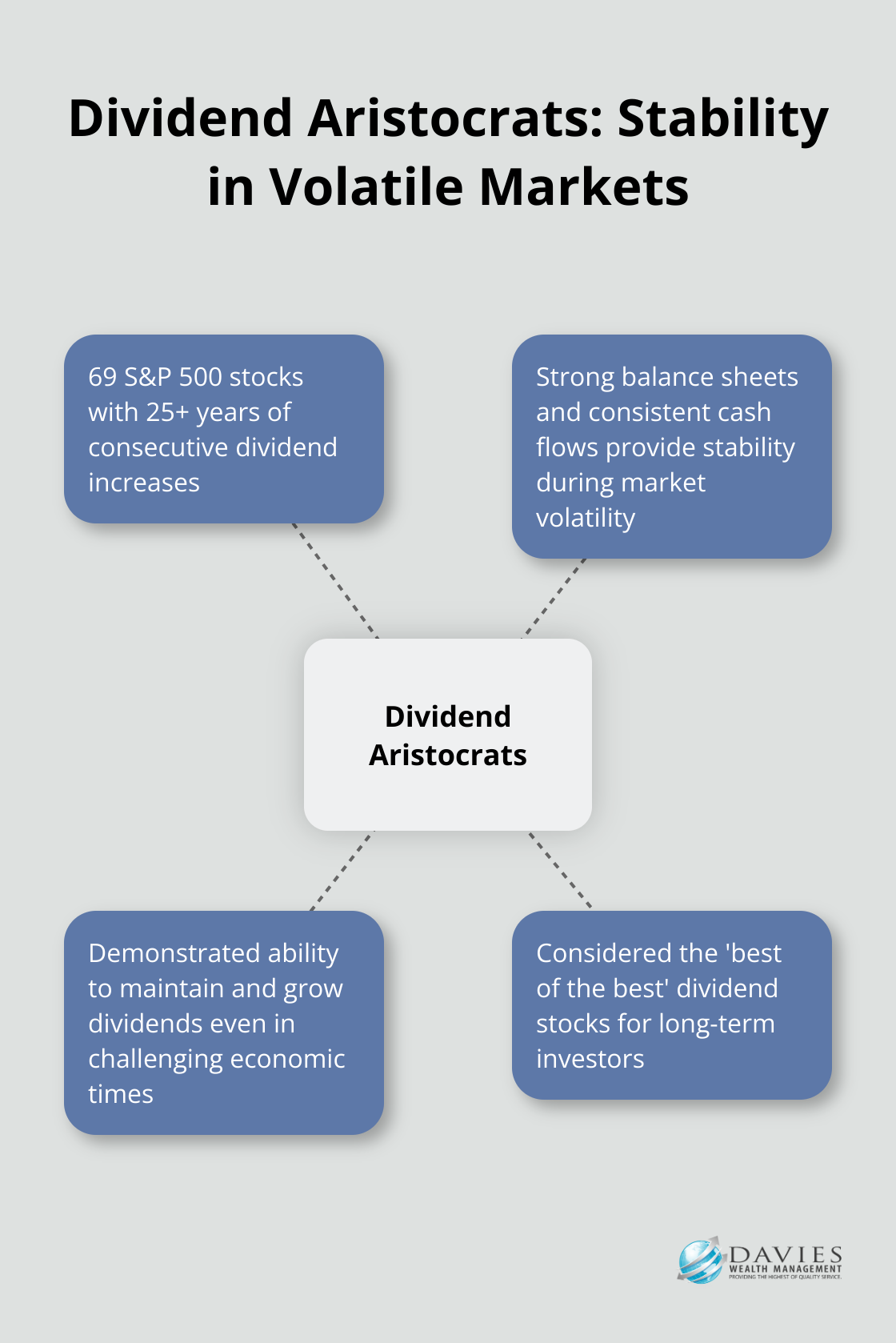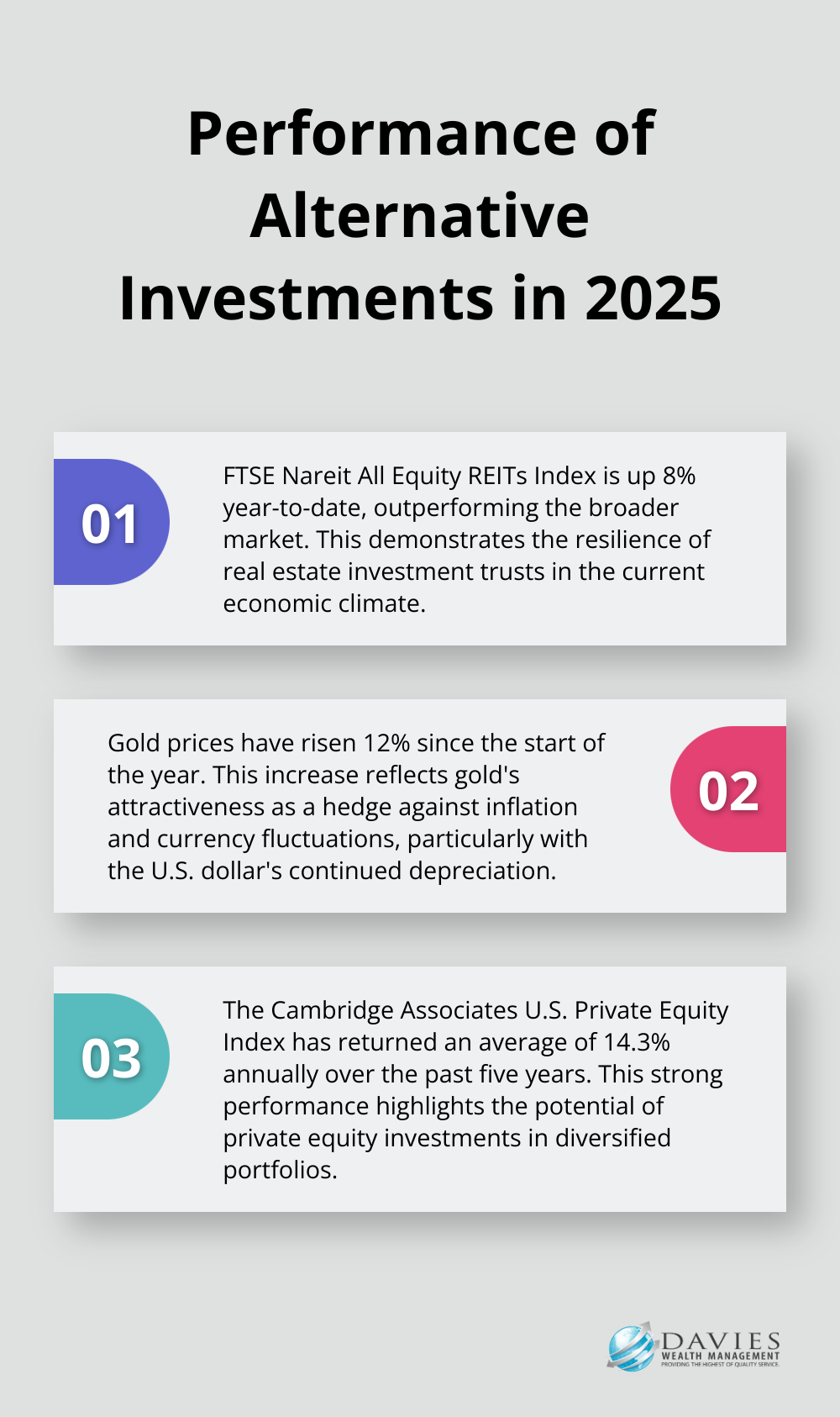Market volatility has become a defining feature of the investment landscape in 2025. With global events and economic shifts causing rapid fluctuations, investors are seeking robust strategies to navigate these turbulent times.
At Davies Wealth Management, we’ve updated our guide on investment strategies for volatile markets to help you make informed decisions. This comprehensive overview will equip you with practical approaches to not only protect your wealth but also capitalize on opportunities that arise during market instability.
What’s Driving Market Volatility in 2025?
Economic Factors Fueling Market Instability
The U.S. economy in 2025 faces unique challenges. Inflation persists as a concern, with the Consumer Price Index (CPI) at 3.5% (according to the latest Bureau of Labor Statistics report). This elevated rate has prompted the Federal Reserve to maintain a cautious stance on interest rates, currently at 3.75%.
Unemployment figures present a paradox. The overall unemployment rate has dropped to 4.1%, yet continuing jobless claims have increased. This contradiction in the labor market adds to investor uncertainty.
The U.S. dollar has experienced a significant decline, with another 10% depreciation expected in the second half of the year. This depreciation increases inflationary pressures by raising import costs, further complicating the economic landscape.
Global Events Shaping Investment Decisions
Geopolitical tensions continue to impact markets in 2025. Ongoing trade negotiations following “Liberation Day” create an atmosphere of uncertainty. U.S. tariff rates have decreased, but the lack of a comprehensive trade agreement keeps investors on edge.
Europe sees a trend of increased defense spending. The MSCI EMU Aerospace and Defense Index has surged 68% year-to-date in USD, reflecting this shift in priorities. This reallocation of resources will likely affect various sectors and global market dynamics.

Japan’s economic situation raises concerns. High debt levels and deficit challenges pose risks not only to the Japanese economy but potentially to global bond and stock markets as well (International Monetary Fund).
Technological Disruptions and Market Reactions
Advancements in artificial intelligence and renewable energy create new investment opportunities while disrupting traditional industries. This technological shift causes rapid changes in market valuations across sectors.
The Role of Investor Sentiment
Investor sentiment has shifted to “extreme optimism,” which historically indicates vulnerability to market corrections (Ned Davis Research). This optimism, coupled with the complex economic factors at play, creates a volatile environment where market reactions can be swift and severe.
Bond Market Dynamics
Bond markets have calmed after periods of volatility, but experts view this serenity as temporary. Real 10-year Treasury yields are priced for an environment with 2% Gross Domestic Product growth. However, the market anticipates one Federal Reserve rate cut in 2025, with three to four additional cuts expected in 2026 if economic conditions require (Bloomberg).
As we move into the next section on defensive investment strategies, it’s clear that navigating this complex and volatile market requires a nuanced approach. Investors must consider a range of factors, from economic indicators to global events, when making investment decisions in 2025.
How to Protect Your Investments in Volatile Markets
The Power of Strategic Diversification
Diversification remains a cornerstone of risk management. In 2025, it’s not just about spreading investments across different asset classes. A nuanced approach that considers global economic trends is necessary.
For instance, the surge in European defense spending suggests allocating a portion of your portfolio to aerospace and defense stocks could be prudent. The MSCI EMU Aerospace and Defense Index’s 68% year-to-date increase underscores this sector’s potential.
Additionally, the U.S. dollar’s 10% depreciation makes exploring international markets an attractive option. This approach can offset potential losses from currency fluctuations while tapping into growth opportunities abroad.
High-Quality, Dividend-Paying Stocks: A Beacon of Stability
In volatile markets, high-quality, dividend-paying stocks often provide a measure of stability. These companies typically have strong balance sheets, consistent cash flows, and a history of weathering economic storms.
Dividend Aristocrats, a select group of 69 S&P 500 stocks with 25+ years of consecutive dividend increases, are considered the ‘best of the best’ dividend stocks. These companies have demonstrated their ability to maintain and grow dividends even during challenging economic times.

Dollar-Cost Averaging: A Volatility Mitigation Technique
Dollar-cost averaging can help mitigate the impact of market volatility. This technique involves investing a fixed amount regularly, regardless of market conditions, potentially lowering your average cost per share over time.
For example, if you invest $1,000 monthly in a diversified index fund, you’ll buy more shares when prices are low and fewer when prices are high. This approach can smooth out the effects of market fluctuations on your portfolio.
The Role of Low-Volatility ETFs and Mutual Funds
Low-volatility ETFs and mutual funds provide exposure to stocks with lower price fluctuations. These funds typically invest in sectors like utilities, consumer staples, and healthcare, which tend to be less affected by economic cycles.
As of April 2025, low-volatility funds have been performing well in turbulent markets. These funds can be particularly attractive for investors seeking to reduce portfolio volatility while maintaining exposure to equity markets.
As we move forward, it’s important to consider how these defensive strategies can be complemented by opportunistic approaches in volatile markets. The next section will explore ways to identify and capitalize on potential opportunities that arise during periods of market instability.
Seizing Opportunities in Market Turbulence
Spotting Undervalued Assets
Market dips create temporary mispricing of quality assets. In 2025, sectors like technology and healthcare experience significant fluctuations, which present potential buying opportunities. The biotech sector, for example, saw a 15% decline in the first quarter due to regulatory concerns, but now shows promising valuations for companies with strong pipelines and solid financials.
Investors should focus on companies with robust balance sheets, consistent cash flows, and competitive advantages in their industries. Price-to-earnings ratios, price-to-book values, and discounted cash flow models help identify potentially undervalued stocks.
Strategic Use of Options
Options strategies serve as powerful tools for managing risk and potentially enhancing returns in volatile markets. Protective puts act as a form of portfolio insurance. Purchasing put options on stocks or indexes limits potential losses while maintaining upside potential.
Covered call writing gains popularity in 2025. This strategy involves selling call options on stocks you own, which generates additional income through option premiums. With the CBOE Volatility Index (VIX) averaging 25 in the first half of 2025, option premiums prove particularly attractive.
Alternative Investments for Stability
Alternative investments provide diversification benefits and potentially lower correlation to traditional stock and bond markets. Real estate investment trusts (REITs) show resilience in 2025, with the FTSE Nareit All Equity REITs Index up 8% year-to-date (outperforming the broader market).
Commodities, particularly gold, attract investor interest as a hedge against inflation and currency fluctuations. With the U.S. dollar’s continued depreciation, gold prices rise 12% since the start of the year.
Private equity and venture capital funds (while less liquid) offer exposure to companies not available in public markets. These investments show strong performance, with the Cambridge Associates U.S. Private Equity Index returning an average of 14.3% annually over the past five years.

Dynamic Portfolio Rebalancing
Regular portfolio rebalancing proves essential in volatile markets to maintain your desired asset allocation. However, in 2025, a more dynamic approach warrants consideration. Instead of rebalancing at fixed intervals, try using volatility-based triggers.
You might rebalance when your portfolio’s allocation to a particular asset class deviates by more than 5% from your target. This approach allows you to capitalize on short-term market movements while keeping your overall risk profile in check.
Sophisticated portfolio analytics identify optimal rebalancing points, taking into account factors such as tax implications and transaction costs. This data-driven approach helps maintain balanced portfolios while potentially enhancing returns.
Final Thoughts
Investment strategies for volatile markets require a balanced approach of defensive measures and opportunistic tactics. Investors can build resilient portfolios through diversification, high-quality dividend stocks, and dollar-cost averaging. Identifying undervalued assets, using options strategies, and exploring alternative investments can help capitalize on market fluctuations.
Personalized investment plans are essential as each investor’s financial goals, risk tolerance, and time horizon differ. What suits one investor may not work for another, making a tailored approach to volatile market strategies vital. At Davies Wealth Management, we create customized investment plans that align with your specific needs and objectives.
Our team of experts provides timely, actionable advice based on current market trends and economic indicators. We offer comprehensive wealth management solutions designed to help you navigate market turbulence and achieve your long-term financial goals. Davies Wealth Management can guide you through the complexities of today’s investment landscape, whether you’re a professional athlete or an individual seeking financial security.



Leave a Reply